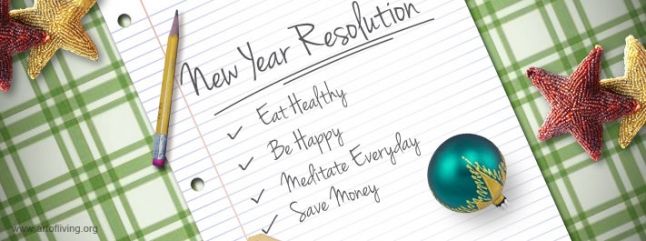 “Living mindfully” is high up in the public consciousness – it is seemingly in the press each week: benefits attributed to the practice include the lowering of stress, helping schools engage their children, and even helping businesses thrive. It is no wonder then that it appears in many people’s New Year’s resolutions list. As many people seek a solution to life’s challenges or express a wish to “turn over a new leaf”, each year I have receive many enquiries about learning to meditate during the first two weeks of January. This year more than most: we could have filled our first Mindfulness-Based Stress Reduction of 2016 twice over (don’t worry, we’ve another course coming in April!)
“Living mindfully” is high up in the public consciousness – it is seemingly in the press each week: benefits attributed to the practice include the lowering of stress, helping schools engage their children, and even helping businesses thrive. It is no wonder then that it appears in many people’s New Year’s resolutions list. As many people seek a solution to life’s challenges or express a wish to “turn over a new leaf”, each year I have receive many enquiries about learning to meditate during the first two weeks of January. This year more than most: we could have filled our first Mindfulness-Based Stress Reduction of 2016 twice over (don’t worry, we’ve another course coming in April!)
Because it is so en vogue, it can be forgotten that the roots of mindfulness were actually laid down over 2500 years from the Eastern contemplative traditions such as Buddhism, Hinduism, and Yoga. I personally believe that keeping these roots in mind is critical to mindfulness and the practice of meditation – the way that we train the mind to be more mindful. Mindfulness attempted without the context of compassion, wisdom and ethics sets it up as a tool that helps us get someTHING – whereas actually, mindfulness (as it was originally intended) is about being where we are with NO striving to be elsewhere (for which we could read ‘better’). In a recent discussion, a Buddhist teacher friend of mine declared that the Buddha would smile at the idea of ‘mindfulness-based stress reduction’. “Meditation should come with a health warning”, he said “as it actually INCREASES stress!”. I laughed along – as yes, in my own experience it DOES: it shines a light on what is actually happening in our experience which can end up being pretty darn tough to handle. Yet, as a meditator of some 7 years now, I keep going – so it can’t be all bad ;-). People who learn to meditate on our Mind Body Dialogue mindfulness courses are introduced to the view and the compassion needed to hold the increase in awareness. This allows new insight to be gained rather than intolerable stress.

Still want to learn to meditate? I hope you do, and if so please read on. I simply believe people need to know it is not a utopian, cure all practice. It ishard work, but I trust that the only way to address the ills and consequences of modern day living is to turn toward what is happening, studying our experience, get curious and become familiar with HOW the mind, YOUR mind works. And there is no better way than “sitting on the cushion” to do that.
With my background in sport and athletic performance, I like to explain the process of becoming more mindful with training and fitness analogies. Let’s make a parallel with track athletics, a sprint event like the 100m. Mindfulness equates to an attribute like ‘speed’ – being mindful is an ability just like being fast. In order to ‘be mindful’ we need to train: and the way we train our mindfulness is through the practice of meditation.
So, when I work with people on their mindfulness goal, I suggest we split the process down in to two stages:
- meditation on the cushion – which allows a chance to practice without* distraction for a structured time period
- mindfulness exercises in real life – for example, mindful eating of meals or everyday tasks like cleaning our teeth.
Going back to our 100m sprinter, she will do sessions on the track as part of a daily, weekly, monthly training programme – drills, sprint starts, interval reps. She isn’t racing, just training. Daily meditation is the equivalent of those track sessions. On the other-hand, mindfulness exercises are like ‘practice races’ – a chance for the sprinter to do sessions of the full 100m distance, but still not under full race conditions.
Let’s consider the practice of meditation. I should say ‘practices’, because it comes in all shapes and forms. The practice we normally encounter first on mindfulness courses (which has its roots in Buddhist philosophy) takes an ‘object’ upon which we place our attention. Whilst this could be a candle, a flower, or even a person, the most common object is the breath. The breath is consistent, regular, reliable AND its a very present moment phenomena: and this is the aim of meditation – to help us experience the ‘here and now’, without judgement, without wanting to change it…to experience ‘what is’. A common myth is that we mediate in order to stop thinking, however the real goal is to change our relationship to our thinking. Just like the eyes are very good at seeing, the ears very good at hearing, our minds are very good at thinking! It would be nigh on impossible to stop thoughts coming in. What we DO have control over is how we deal with them – we can struggle with thoughts, or we can learn to let them go, to let them be ‘just’ thoughts. A common analogy is to consider the mind’s true nature as being the blue sky. Occasionally, clouds will come across that scene – and rather than getting carried away by the clouds, we just watch them pass by, letting them go as easily as they came.
I think this is one reason why people taking up the practice for the first time experience such difficulty in sustaining the practice in the long term. It is as if our view follows this equation:
| Number of thoughts = | 1 |
| how good the session was** |
If we can be more gentle on ourselves, take our thoughts (and ourselves) less seriously, there is a better chance we will stick with this long term. It is a PRACTICE.
At this point, lets go back to our 100m sprinter. To improve their speed, they might go to the gym and do some weights to help build their muscles and power. As we all know, muscles do not get stronger by staying still, they need to move. What if we were to think of our mind as a muscle? Let’s say that our mind has two muscles that help us stay with the present moment:
- The muscle of mindfulness – when strong, this helps us stay with the breath
- The muscle of awareness – when this muscle is strong, we are able to notice when we are not with the breath – it is often described as “the watcher”
We can think of these just like the pair of muscles that extend and flex our legs: the quadriceps and the hamstrings. When one is contracting, the other is relaxing – and think of the action they produce: there is movement. So, it follows – to build our capacity to be present, mindfulness and awareness work in tandem, movement back and forth. Does that help explain why its not critical you stay with the breath? Movement back and forth, back and forth – that is the ability we need.

In saying all this, we do need to remember WHY we learn to meditate. One of my favourite quotes about meditation is by Robert Thurman, a great Buddhist scholar and teacher “Practice? What’s all this about ‘practice’ – what about the real performance?”. Because as we started in this post – meditation is the practice we use to train mindfulness. It is simply the means to an end rather than the end in itself. There are no prizes for being a “great meditator”. And while there are no prizes for being “The World’s Most Mindful Person” either, the practice of letting thoughts arise, not struggling and then letting them go can permeate our everyday lives. We may find reward in how we relate to our feelings, emotions and other people. Meditation helps us slow things down – and with practice, we turn our mindfulness developed on the cushion in to a very useful life skill: we start to notice how we are now responding and not reacting to our lives…it feels like there is a bigger gap between the stimulus and our response.
If this blog post has inspired you to flex your mindfulness muscles this year, why not sign up for one of our courses, or come along to a weekly class? Do get in touch if you have any questions.
*Although in practice there is ALWAYS something to distract us – the barking dog, our parter doing their teeth in the bathroom next door, the bin men doing their weekly round (Yes, I speak from personal experience!)
** and that becomes how good I am at meditation, how good I am at anything….etc etc

